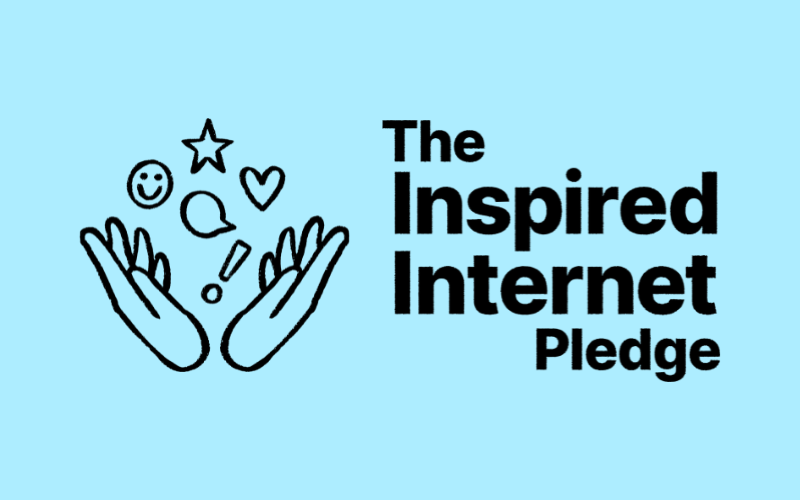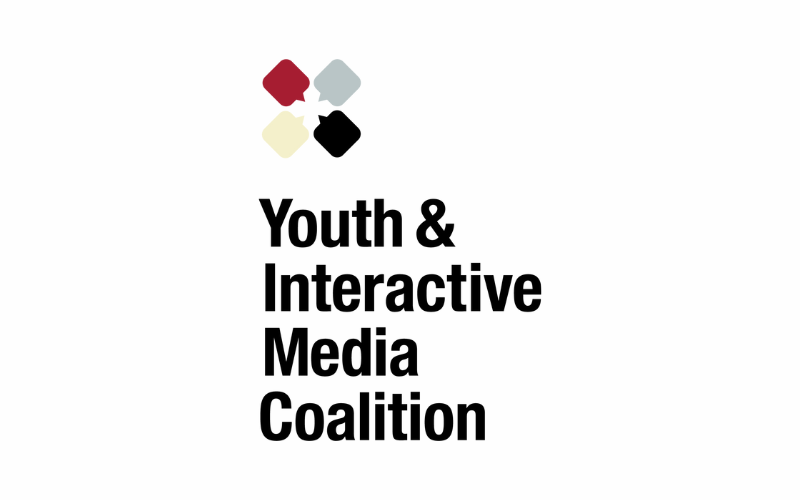This research brief was inspired by, and focused on information originally published by Elizabeth (Libby) Hunt, a colleague at the Digital Wellness Lab, in Encyclopedia of Child and Adolescent Health
What is Digital Citizenship?
Digital citizens were once defined as “those who use the internet regularly and effectively – that is, on a daily basis” (Mossberger et al., 2007, n.p). However, there is much more to digital citizenship than simply using the internet. Since that definition was published, the concept of being online has evolved dramatically. The internet is no longer confined to desktops and laptops; most teens in the United States have access to a smartphone (Vogels et al., 2022), and social media has become a space where youth congregate daily. As most of us are now digital citizens, what does it mean to be a good one?
The Limitations of Traditional Definitions
Digital Citizenship as a practice has been defined as “the norms of behavior with regard to technology use” (Ribble & Bailey, 2004, p. 13). However, in our current technology landscape, this definition does not fully capture the complexities of navigating the internet as an active digital citizen and engaging in digital citizenship. While many definitions focus on safe and responsible use within online spaces, scholars criticize this framework as limiting, arguing that it does not account for possibilities like civic engagement (Heath, 2018).
Other scholars believe that digital citizenship goals should be more precisely defined, focusing on “(1) respectful behavior online and (2) online civic engagement” (Jones and Mitchell, 2016, p. 2063). For young people, online and offline lives are no longer necessarily separate experiences – yet another new consideration in understanding digital citizenship.
Introducing Digital Citizenship+ (Plus)
As our digital landscape continues evolving, so will our understanding of digital citizenship. The Berkman Klein Center for Internet & Society at Harvard University recently introduced the term “Digital Citizenship+ (Plus),” defined as “the skills needed for youth to fully participate academically, socially, ethically, politically, and economically in our rapidly evolving digital world” (Cortesi et al., 2020, p. 28). This new concept consists of 17 areas as defined by the authors, including content production and AI (Cortesi et al., 2020).
Focusing on Key Areas
This research brief will focus on and expand upon three goals and practices of digital citizenship highlighted in Elizabeth (Libby) Hunt’s recently published chapter “Media literacy and digital citizenship” in the Encyclopedia of Child and Adolescent Health. These three topics are character education, online safety, and civic engagement.
Character Education in a Digital World
Children are growing up amid massive technological change and development. Research from elementary school teachers indicates that many children in the United States are being taught digital citizenship in school (Lauricella et al., 2020). While there are various approaches to digital citizenship education, digital citizenship through a character education lens addresses both the opportunities and challenges of living a digital lifestyle (Ohler, 2011) by tapping into lessons youth already encounter.
Developing Social-Emotional Skills for Online Interactions
Social-emotional skills like empathy, kindness, and personal responsibility, which are crucial for offline interactions, can also be taught to enhance online interactions (James et al., 2021). Parents of adolescents in the United Kingdom prioritize virtue-based technology mediation strategies, such as talking to their children about what online content might be promoting and encouraging them to interact online in respectful and compassionate ways. In one study, virtue-based strategies were prioritized over practical strategies (e.g., removing a device as a result of bad behavior) and deontological strategies (e.g., making rules about time online, content their children can access, or using parental controls) (Harrison & Polizzi, 2021). This suggests that, when considering strategies to best support children’s navigation of online spaces, approaching digital citizenship education through character-fostering practices should be a high priority.
Character Education for Younger Children
Even for younger children, character education through digital citizenship is gaining traction in practice. According to one study from the United States, 62% of K-2 teachers and 69% of 3-5 grade teachers report using some digital citizenship curriculum, with competencies related to developing positive character features being most common, such as understanding digital drama and hate speech (Lauricella et al., 2020).
Understanding Online Safety
Digital citizenship also helps adolescents and youth keep themselves (and others) safe in online and digital spaces. Notably, the concept of online safety encompasses many facets of a child or adolescent’s online life. The scope of online safety can include the dangers of sharing personal information online, the importance of password protection, the risk of identity fraud, and how to protect oneself from less defined digital threats, like reputation.
Digital Citizenship+ (Plus) Framework
The Berkman Klein Center’s Digital Citizenship+ (Plus) framework includes specific areas of digital citizenship that could each be interpreted as online safety knowledge. Privacy and Reputation is the “ability to protect one’s personal information online and that of others” and the knowledge surrounding a digital footprint and the possible consequences of data points from that footprint being collected; Safety and Well-being is “the ability to counteract the risks that the digital world may come with to protect one’s physical and mental well-being” (e.g. problematic use of media like overuse) and can be classified into three main dimensions of conduct, contact, and content; Security is “the ability to protect the integrity of one’s information, digital devices, and assets” (Cortesi et al., 2020, p. 30).
Redefining Safety in a Technological Landscape
All three areas demonstrate that “safety” in this technological landscape is dramatically different and more nuanced than the “stranger danger” and exploitation focus of the past while simultaneously highlighting the range of topics youth need to be educated about to navigate online spaces confidently. Black et al. (2022) note that although digital citizenship and cyber safety are often used interchangeably, young people are not always vulnerable online and have their own agency to make decisions. Fostering digital citizenship skills may be a way to break away from the fear-based internet safety teachings of the past, which Jones and Mitchell (2016) suggest is “likely a positive change for youth” (p. 2064).
Civic Engagement and Digital Citizenship
Social media and other online spaces offer users the potential to organize and participate in active democracy on a national if not global, scale. However, digital citizenship requires people to understand how the digital spaces in which they are active facilitate participation in social movements (Pangrazio & Sefton-Green, 2021).
Social Media Activism for Youth
Social media activism provides opportunities for digital citizenship for youth. Digital media (e.g., social media) can engage young people in civic opportunities while ensuring low barriers to civic participation. Digital technologies can connect diaspora communities to reduce exclusion from political and civic engagement, allow groups to learn about other cultures or anti-racist ideals, deepen civic networks, and may particularly help minority youth access civic and political engagement opportunities (Harris & Johns, 2020).
Leveraging Technology for Peace
UNESCO’s report Empowering Youth to Build Peace (2015) highlights how youth can be taught to leverage technology to connect and communicate online and use critical thinking skills to counter online extremism and radicalization. Research shows that youth are interested in participating in political movements and activism. Teachers can harness that interest and their students’ existing social media skills to engage students in digital citizenship (Gleason & von Gillern, 2018).
Conclusion: The Importance of Teaching Digital Citizenship
Growing up in today’s society means regularly engaging with technology. During the pandemic, screen time increased, both out of necessity during remote schooling and for connection, and has remained high. On average, teens in 2021 were absorbing over 8 hours of media content (Rideout et al., 2022), and almost 50% of teens say they’re online almost constantly (Vogels et al., 2022). Even the youngest of children, under two years old, were using screen media for almost 50 minutes a day just before the pandemic (Rideout & Robb, 2020). Screen media are important tools for social connection, education, entertainment, and advocacy that pervade the daily lives of children and teens. Thus, they must understand how to use these tools and be good citizens in the digital world.
Adapting to Rapid Technological Changes
Although education may not be able to keep up with the rapid developments in available technology, understanding the core principles of digital citizenship will allow youth to access, evaluate, and use digital media with a critical eye and the skills to be positive digital citizens.
Educational Resources and Curricula
One widely used education resource is Common Sense’s K-12 Digital Citizenship Curriculum, which was developed with support from Harvard’s Project Zero. Development included surveying students about their concerns about digital life, surveying educators to explore pedagogy for the curriculum and current teaching practices for digital citizenship education, educator interviews, and classroom field research to evaluate the success of different test approaches (James et al., 2021). This curriculum continues to be studied by researchers (e.g., Brandau et al., 2022), and new digital citizenship curricula programs like Screenshots show promise for developing healthy digital citizenship behaviors for middle-school students (Bickham et al., 2021).
Empowering Youth as Digital Citizens
With these tools and the ones sure to come in the future, youth can become empowered digital citizens with the tools to create and shape a positive digital world.
This research brief was written by Kaitlin Tiches, MLIS, Medical Librarian and Knowledge Manager at the Digital Wellness Lab. For more information, please email us.








